How to paint a fence: get perfect results in 4 easy steps
Follow our tips on how to paint a fence to get a professional looking finish and give your garden boundary a new lease of life
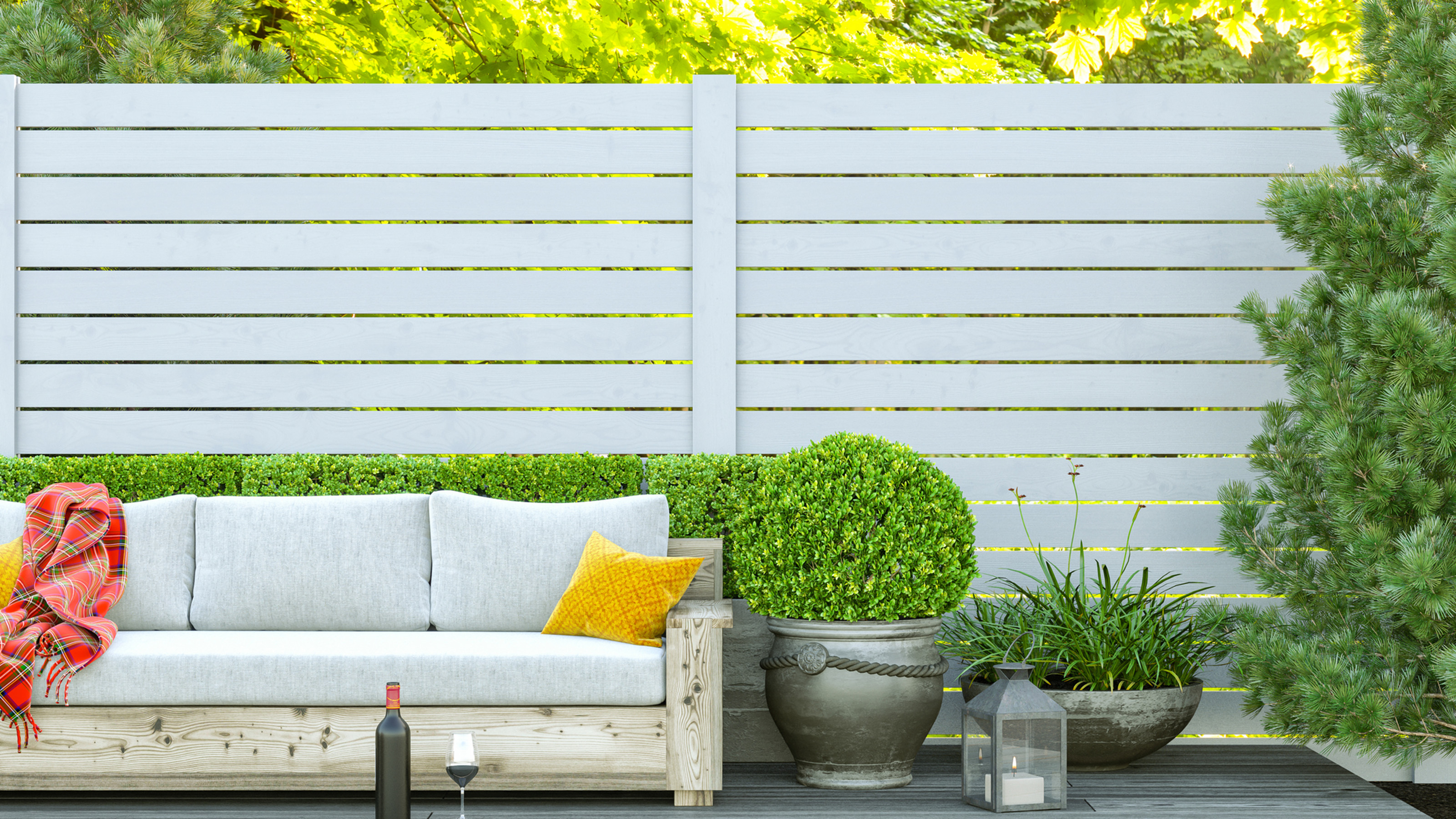

Learning how to paint a fence is a great way to give your garden a facelift without a major overhaul. As far as DIY goes, painting is a skill which doesn't require too much experience. Having said that, there are a few key pieces of advice you should take note of to ensure you do the best job possible.
Painting is one of the easiest ways to transform your existing garden fence ideas, as not only will it smarten up the overall appearance of your plot but it will shield your garden boundary with a protective coating too. Some fence paints only require a single coat which will last for many years to come without needing a top up. These may be more expensive, but are worth the investment. Once you take into account the prep involved, you'll soon realize that this isn't a job you want to be doing on a regular basis.
Even if your garden is small, set aside a whole day to get the job done – although another pair of hands will make it go quicker. You will probably want to split your prep and painting up to do on separate days. If your fence requires a sand and a clean then you will need to let the fence dry before you apply the paint.
Before you set a date for your project, check the weather forecast to make sure that it's a dry day. Even it's been raining the day before this might disrupt your plans as wood needs to be completely dry before you add a coat of paint to your fence.
Smarten up your boundaries by learning how to paint a fence
Aside from applying the paint there is some essential prep which is important to factor into the job in hand. Some of this won't be necessary if you've just learned how to install fence panels and the wood is brand new. The prep gets more in depth the older the fence, but it's essential if you want to get the best results.
By following our easy tips on how to paint a fence, you can get brilliant results every time.
What you will need for painting a fence:
- Stiff brush
- General-purpose cleaner
- Bucket
- Wood filler
- Sandpaper
- Dust sheets
- Masking tape
- Exterior wood paint
- Paint kettle
- 3in paintbrush
- Optional paint sprayer
1. Clear the area of any plants and trees
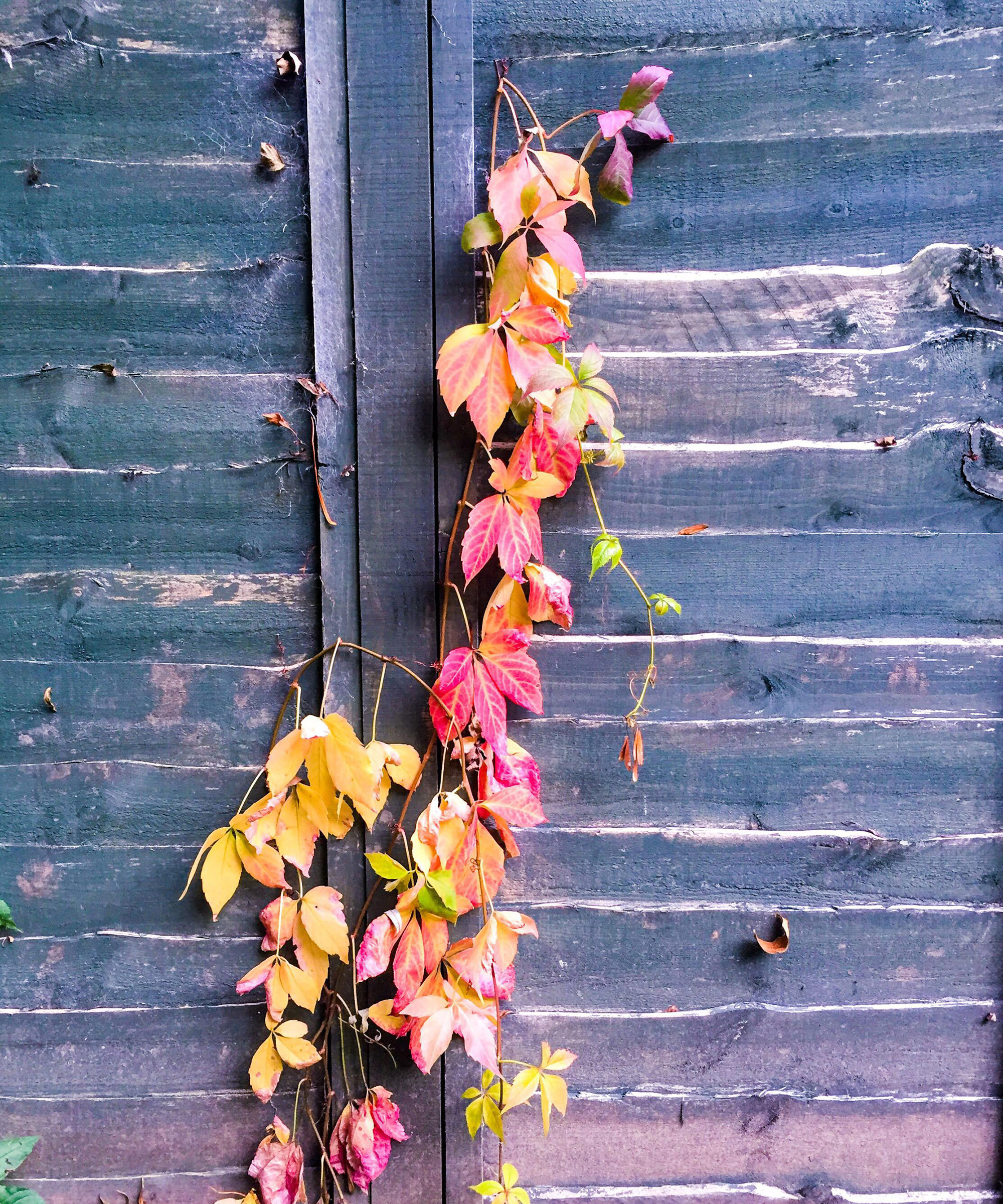
Remove any leaves and debris from your fence panel before you paint
To begin, make sure that no screening plants or shrubs in your garden will interfere with your fence while it's being painted. 'It would help if you raked or mowed your lawn to collect any loose vegetation around your fence too,' says Samantha Jones, landscaping expert at My Job Quote.
If you have trees or hedging plants that lean over your fence, you may have difficulty getting around them, or they may knock into the fence while you're painting it. 'Remove the branches from the fence,' advises Samantha. 'Use a leaf blower to remove vegetation or collect it with garden gloves.'
In turn you may be worried about the plants near your fence getting paint splatter on them. 'Use plastic sheeting to protect your prized plants but be careful not to crush them,' says Samantha. 'You could also place a sheet of plywood between the shrub and the fence to keep paint toxins from causing damage.'
2. Prep the surface of your fence
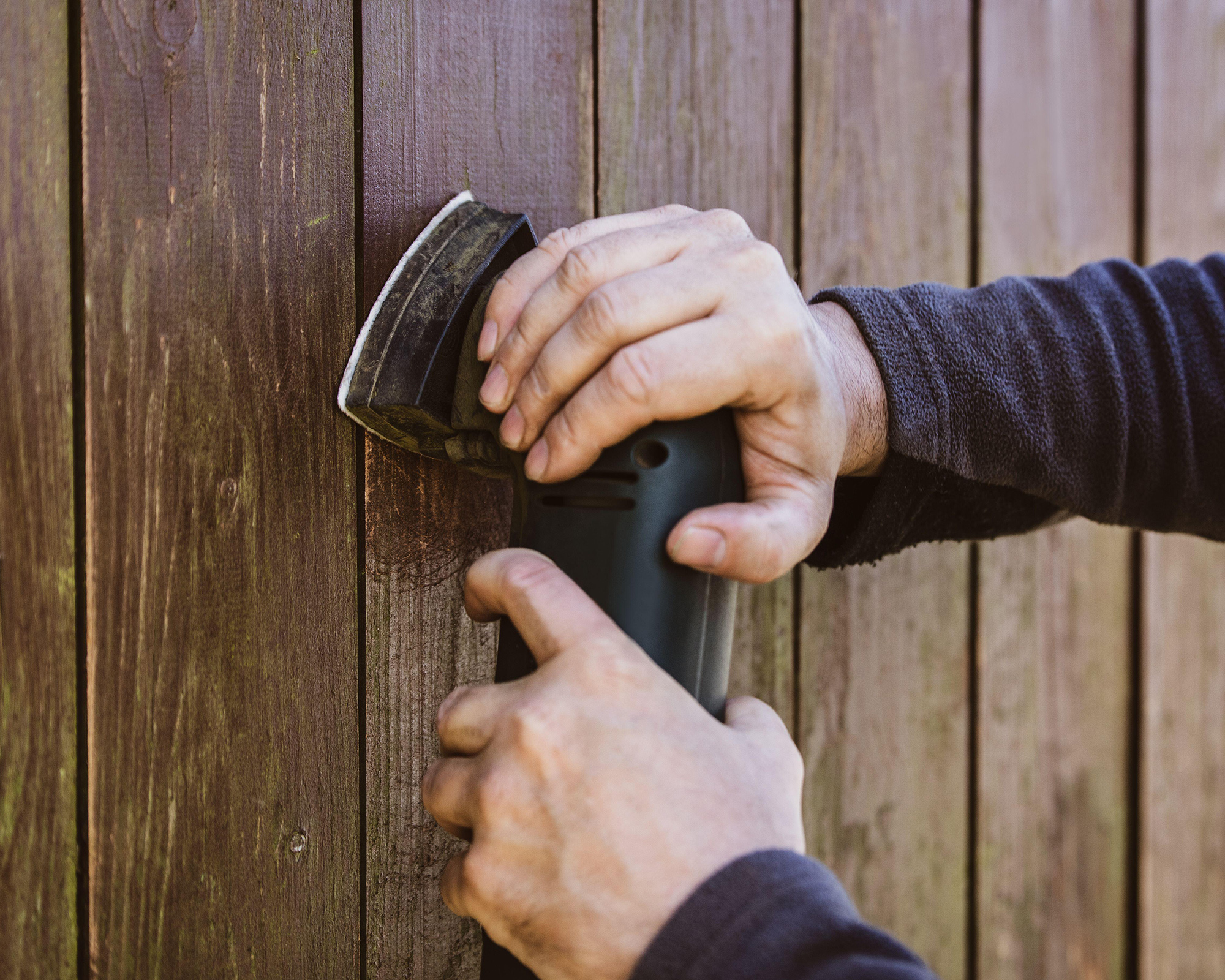
Sanding beforehand might not be necessary if you're painting a new fence panel
If you're painting a brand new fence then there will be less preparation work needed. 'Sanding is usually not necessary before staining a new fence,' says Samantha. 'However, it doesn't hurt to do some spot sanding if you notice any eased edges or other areas where the stain may have trouble adhering. If your fence is older, sanding it before staining is a must.'
Just like when you're painting garden furniture it's important to clean the surface before you start too. Use a stiff brush to remove dirt and flaky bits. Scrub away any algae with a diluted general purpose cleaner and let it dry completely. Replace any rotten sections and repair any small areas of damage with exterior wood filler (sand when dry, so it’s flush with the wood).
If your fence posts are concrete, cover the edges with masking tape. Do the same with any handles or metalwork you might have attached to your fence panels or wooden garden gate.
3. Test a small patch

Test a small section of your fence to check you're happy with how the paint color looks
Before painting, thoroughly stir the exterior wood paint you’re using until the color is consistent throughout. 'Check that you're happy with the color by testing it out on a small area of the fence,' advises Senior Product Manager and DIY expert, Jimmy Englezos from Ronseal, 'and remember that if the fence is previously painted in a dark or bold shade, it may take more coats to get the desired garden fence color with the new paint.'
4. Time to get painting
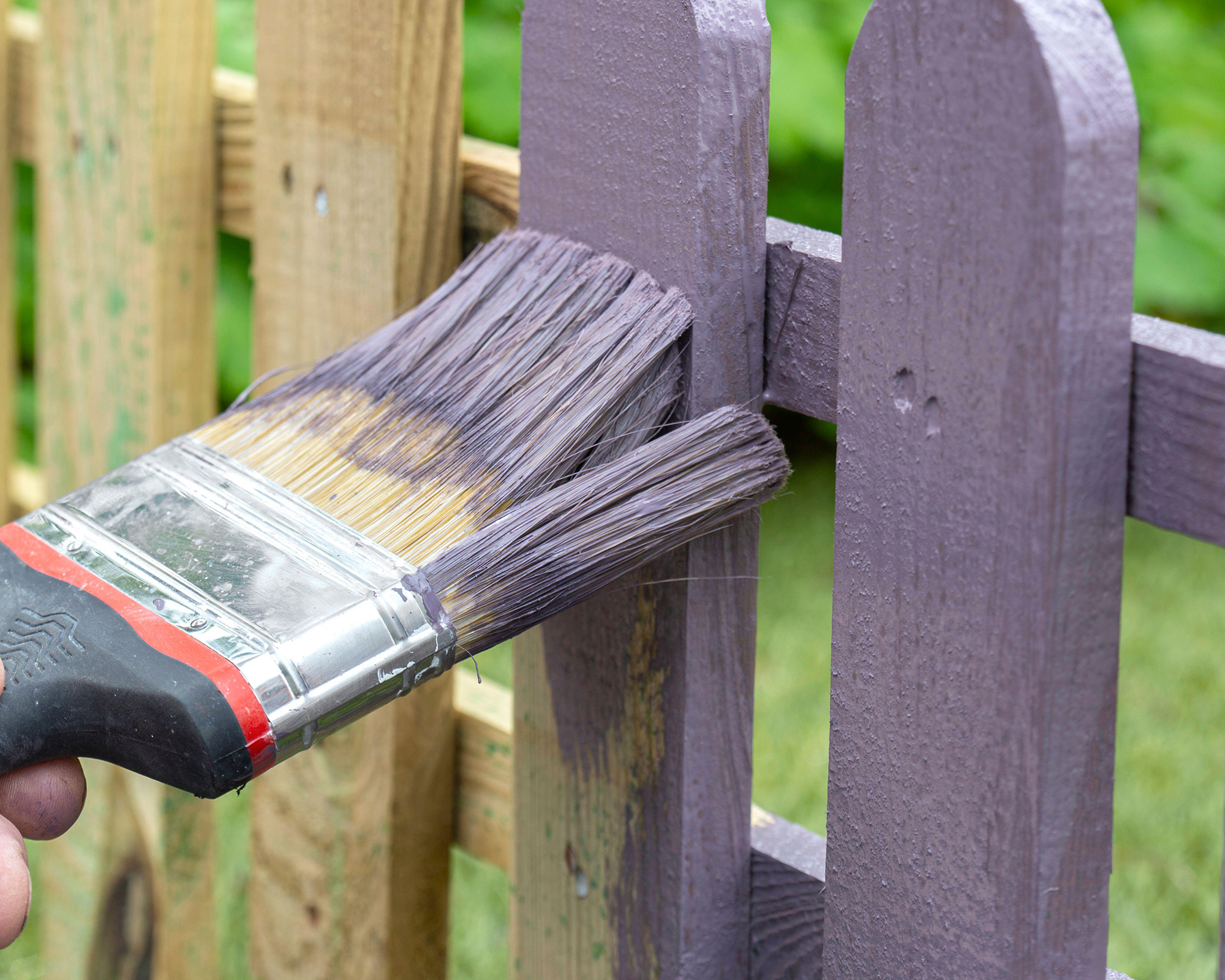
Don't apply your layers of paint too thickly
Now comes the fun part of how to paint a fence. First, pour some of your fence paint into a paint kettle. Brush strokes of paint should go in the same direction as the wood grain, but try not to spread paint too far with each stroke. Don’t overload the brush with paint and work it well into the wood.
For end grains (such as the top of fence posts), dab the brush in a stippling motion, to get the product into the wood. Leave the paint to dry completely before applying another coat. Two thin coats give a better result than one thick coat.
Don’t spread the paint too thinly and if you see any drips running down the fence then brush through them to prevent them streaking down the fence.
'If you don’t want to use a brush, try using a paint sprayer,' says Jimmy Englezos from Ronseal. 'Your chosen fence paint is poured into the sprayer, pump it up and spray in a sweeping motion about 6in (15cm) away from the fence.' Jimmy also advises working in horizontal lines, dropping down and overlapping by around 50 per cent with each new line. If you notice drips, then use a brush to brush through them.
What is the best tool for painting a fence?
'There are numerous methods for how to paint a fence,' says Samantha Jones, landscaping expert at My Job Quote.'The most obvious tools are a paintbrush or roller. This will do the job and allow you to get neat and precise results every time, but it can be highly time-consuming, especially for larger projects. If you choose to paint your fence or garden furniture by hand, follow the wood grain to cover a larger surface area faster and achieve a smoother finish.'
Investing in a paint sprayer from Amazon is a faster alternative to using a paintbrush. Depending on the size of your fence, they can be up to ten times faster than a standard paintbrush.
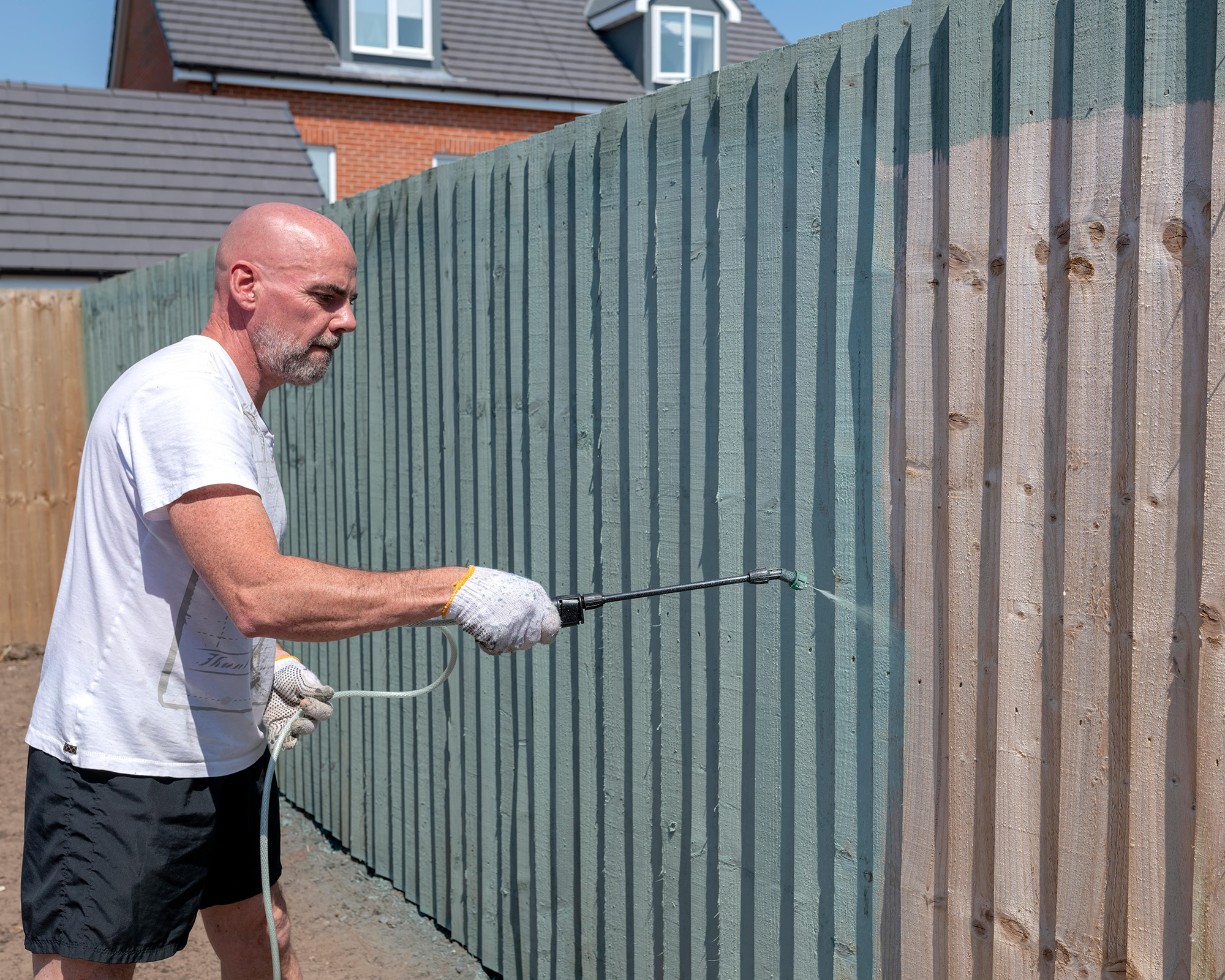
A paint sprayer will cut down on paint time considerably
Why should you sand a fence before painting it?
Although using paint as an update is a great cheap fence idea, it's worth spending time to get a professional finish. To do this, you should get a good, even surface for painting, and a hand-held power sander will help you achieve this.
'Begin lightly with medium grit paper or a disc,' says Samantha Jones says. 'Once you've figured out how to sand an entire board, it will be much easier to keep the color consistent. After you've finished sanding with the machine, you can get into the nooks and crannies by hand by folding sandpaper and using a sandpaper block.'
For non-painted or stained fencing the method is the same, but go lighter. 'Look for and focus on trouble spots first,' she adds. 'Then, with a consistent look in mind, tackle the rest of the fence.'

Teresa has worked as an Editor on a number of gardening magazines for three years now. So she is lucky enough to see and write about gardening across all sizes, budgets and abilities. She recently moved into her first home and the garden is a real project! Currently she is relishing planning her own design and planting schemes. What she is most passionate about when it comes to gardening are the positive effects it has on our mental health to grow and care for plants, as well as being great for the environment too and help provide food and shelter for wildlife.
